
Stella doppia
Roma (Italy)
Sct 127/1250
Digitale (Photoshop)
12/Aprile/2013
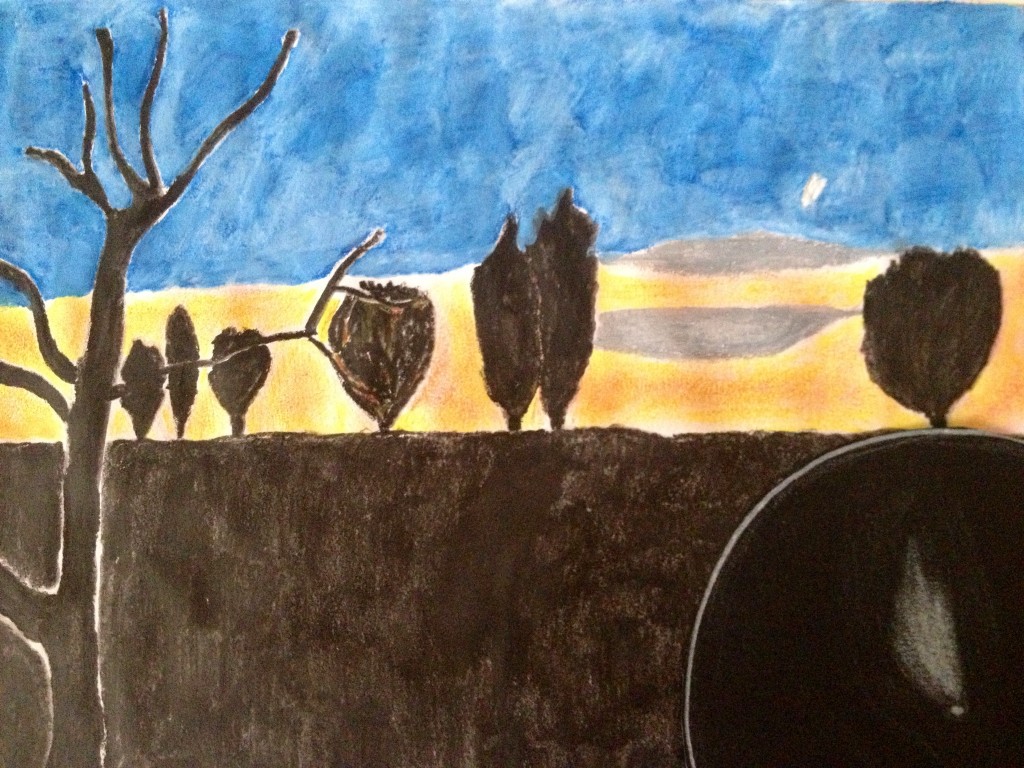
My name: Silvia Fabi
Object name: Panstarrs or c/2011 L4
Type: comet
Date: 21/03/2013
Location: Ostellato (Italy)
Media: white pencil on black paper
Hello friends artists,
this is my sketch of the Panstarrs, one of the comet of 2013. The tail of the comet was long enough and the head was very light. This is my first comet and I liked it so much. I observed it with a 100 mm telescope, at 7,30 p.m. It was visible with naked eye like a 2 magnitude star. Moreover I observed it with a 20×80 binocular, and it appeared equal, more or less.
Hope you like this sketch! And I hope you understand my english!
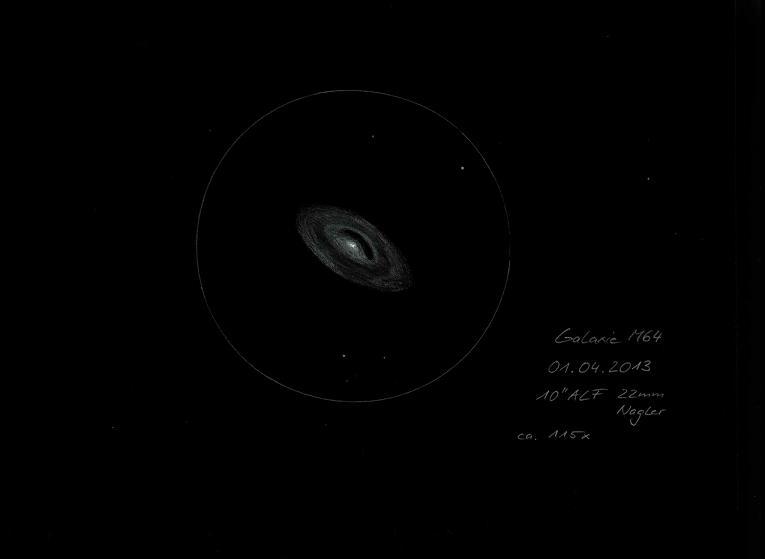
Hello,
this week I take the chance at the first April to sketch Messier 64. First I observed the supernovae in M 65. I needed more than 2 hours to confirm the sighting with my 10″ ACF. I appreciate the brightness was somewhat less 15 mag and my telescope was at its limit. The conditions were quite good (no wind, temperatures about 0° C, dry air). After this I enjoyed the nice galaxies in Coma Berenices and Virgo Cluster. Markarians Chain is always feast for the eyes. M 64 was the last galaxy in this observing session and so took my pencil and paper block to hold the impressions.
Unfortunately, there were problems with my scanner. The finer details don´t come out and some areas are to brihgt. I hope you like the result anyway.
Object: Galaxy
Name: Messier 64
Telescope: 10″ ACF SC
Eyepiece: 22mm Nagler
Magnification: 120x
Location: Germany near Tauberbischofsheim
Medium: White paper and pencil – inverted colors with Windows Paint
CS Uwe
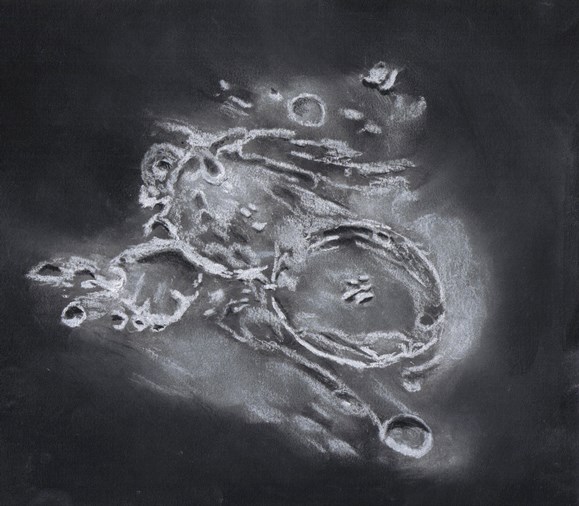
As the evening progressed the sky became mostly clear with some ground fog adding to the light scatter and the inevitable falling temperatures of an early spring night. Nevertheless, it was good enough for some observing and sketching. Crater Theophilus (100km.) was more than 450 kilometers from the terminator but remained an attractive target in the eyepiece as the Moon cleared a nearby building in my southeast.
Theophilus is a complex Erastothenian era crater at just over 1.3 billion years in age with large central peaks of deep crustal material that formed on the rebound from the initial impact. The appearance looks fresh when compared to its much older Nectarian period neighbor Cyrillus (100 km.). It was evident while observing this pair that Cyrillus was showered with ejecta from Theophilus and prior millennia of countless strikes by incoming rocks from space. The central peaks of Cyrillus are smaller, more muted and worn down. 300 kilometers to the west of Theophilus the Apollo 16 astronauts Charles Duke and John Young collected 96 kilograms of rocks over 3 days back in 1972 which included some ejecta from the Theophilus formation.
Remote sensors on the orbital spacecraft Chandrayaan-1 detected Iron rich Magnesium –Aluminum oxides on the central peaks of Theophilus adding to the knowledge of the composition to the deep lunar crust as indicated by a publication last spring.
Two other craters included in the sketch are Mädler (29 km.) also of Erastothenian age and Ibn-Rushd (34 km.) an ancient one at more than 3.2 billion years.
Sketching:
For this sketch I used: black Strathmore 400 Artagain paper 8″ x 10″, white and black Conte’ pastel pencils, a blending stump, white Pearl eraser. Contrast was slightly increased after scanning.
Telescope: 10 inch f/ 5.7 Dobsonian and 6 mm eyepiece 241X
Date: 3-30-2013; 04:30-05:35 UT
Temperature: 2° C (36° F)
Some thin clouds, calm
Seeing: Antoniadi IV poor
Colongitude 128.9 °
Lunation 18.4 days
Illumination 90.1 %
Frank McCabe

Hello Artists,after a long time with rain(GRRRRR!!), I made two sketches about Comet PanStarrs!! I go out from work and I go to hill near Little town of Saltara. Very cold temperature and light icely wind. The clouds covered the zone but ,finally they go out from the horizon. I see the comet under the rest of gray clouds and, on blue paper i made the first sketch with bino 10×50. In the same time I take my big bino 25×100 on tripod and made the second sketch, with pencil on black
paper. Unfortunately the comet was very low and the sketch was very difficult to made.
I hope like you.
Ciao a tutti!!
Giorgio.
Site: Saltara,19 March 2013
Instruments: bino 10×50 and big bino 25×100
Media: Coloured pencil on blue paper, with pencil on black paper
seeing: Very clear after rain but icely temperature!
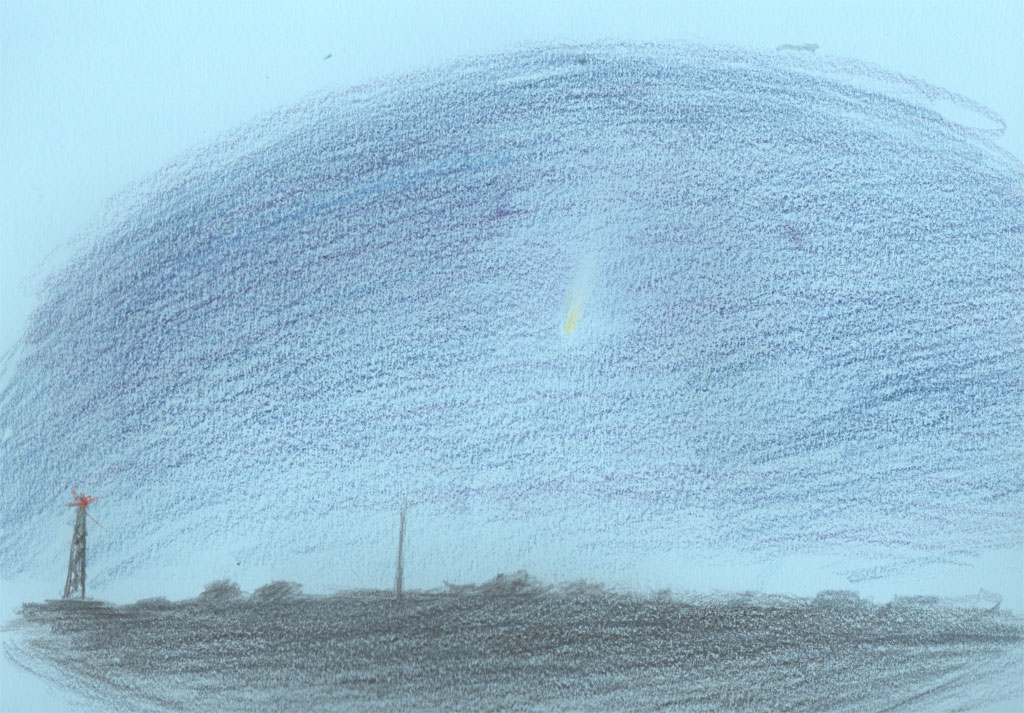
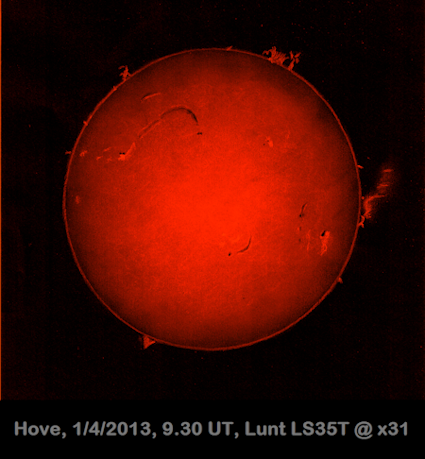
Working with different gray pastel pencils works fine on the Moon. I tried the same technique on the Sun and was quite happy with the result. Hope you like it too.
Clear skies
Jef De Wit
Object: Sun
Location: Hove, Belgium (51°09’ N 4°28’ E)
Date and time: 1 April 2013, around 9.30 UT
Equipment: Lunt LS35T
Eyepiece: 13mm Nagler T6 (31x)
Medium: white, gray and black pastel pencils on black paper, scanned, colored with Paint Shop Pro, text added with Paint
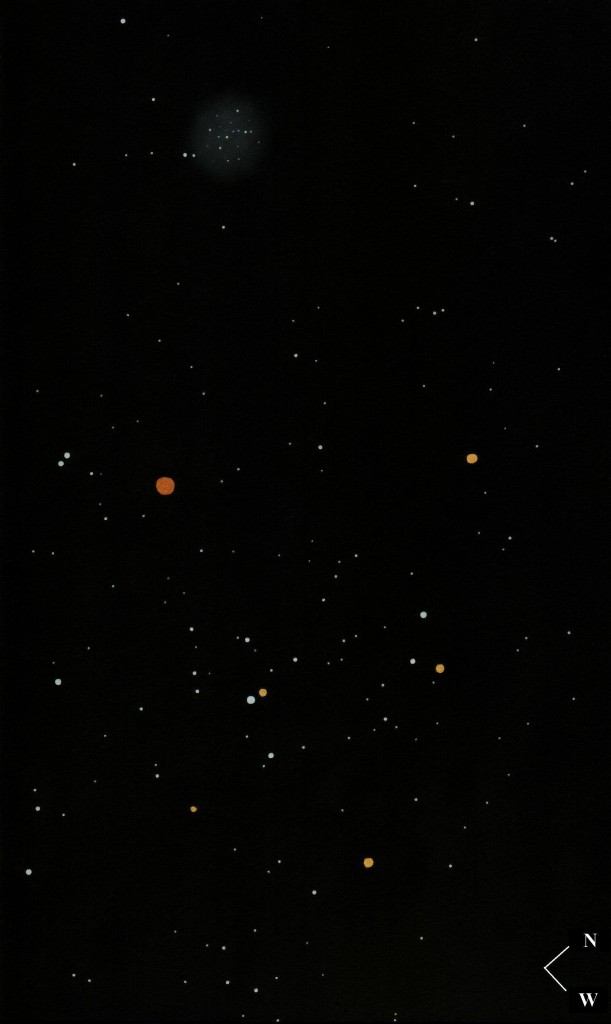
Object: Hyades and NGC 1647
Date: I. 03. 03. 2013.
II. 04. 03. 2013.
UT.: I. 20h24m – 21h12m
II. 19h53m – 21h38m
Equipment: Stellarvue 50/200 finderscope (F50W2 Deluxe)
40 mm GSO Plöss eyepiece
Mag.: 5x
FOV: ~ 10˚ x 5˚
S = 8 T = 4
Observer: János Gábor Kernya
Location: Sükösd, Hungary